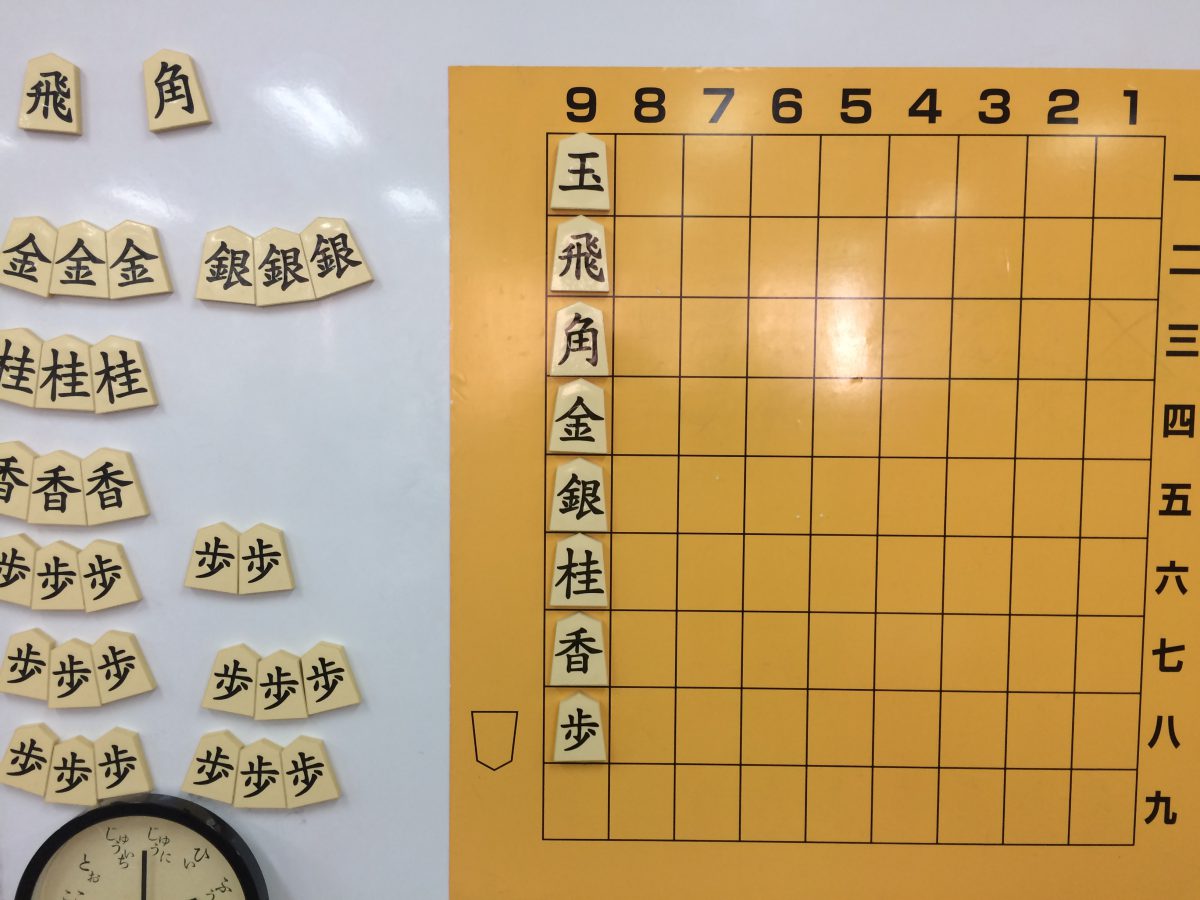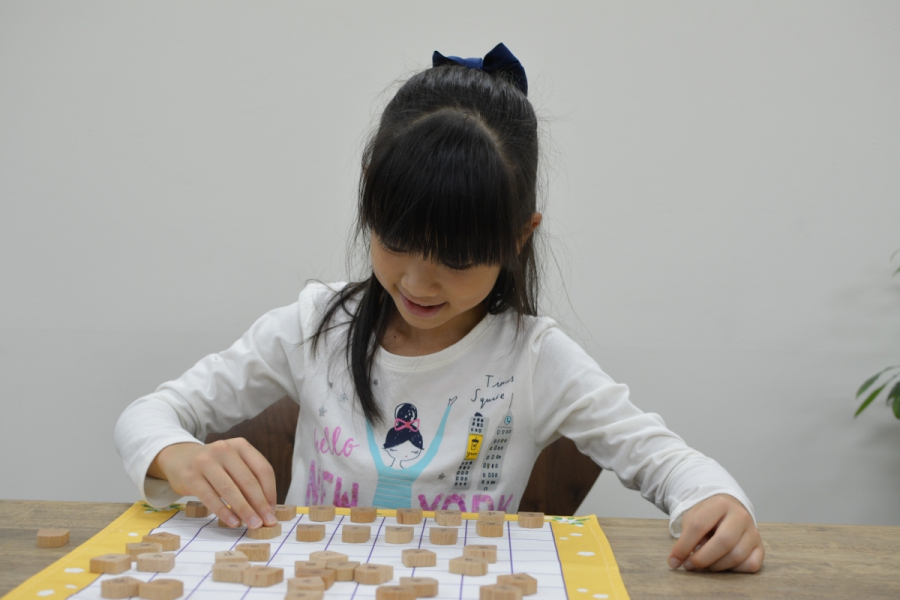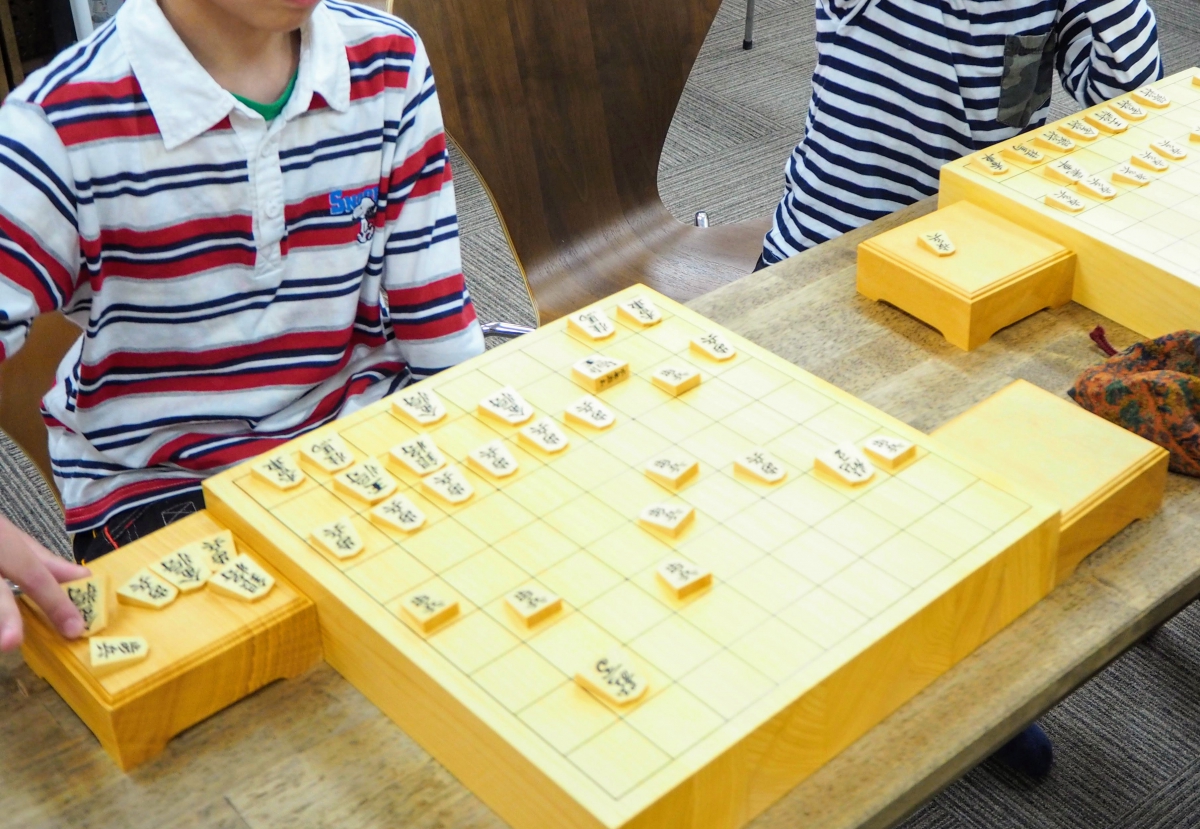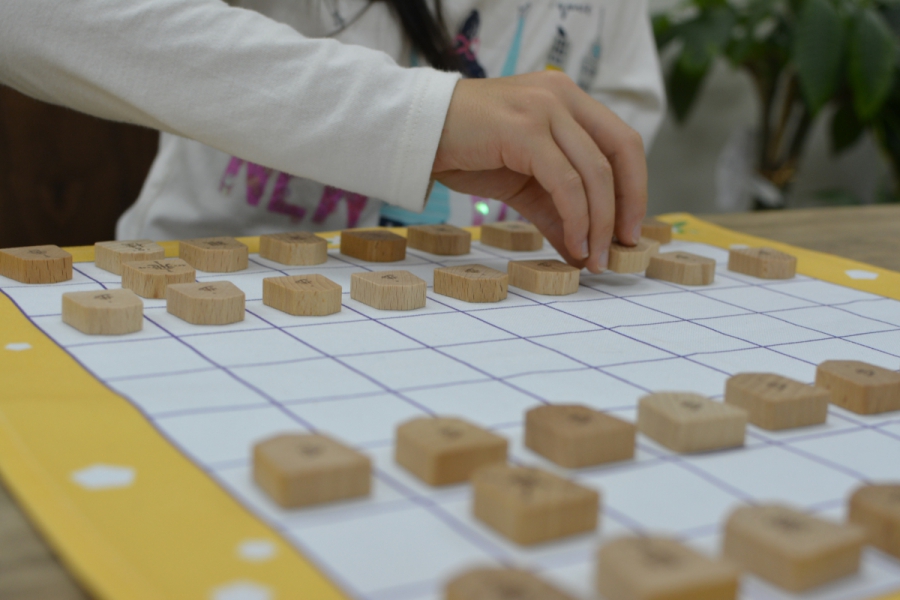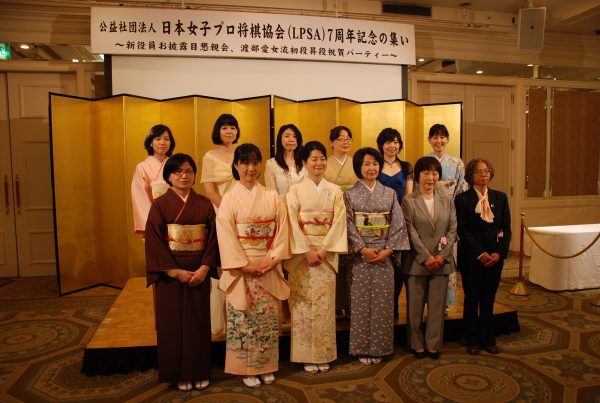I-tsu-tsu Blog
-
Things That Shogi Beginner Children Often Get Confused with: #2 Piece Change
Capture the Opponent’s Pieces to Increase Your Hand Pieces In the previous lesson, we learned how to capture a piece with a higher value. As you know, in Shogi once you capture your opponent’s pieces, they will become yours as your hand pieces. Shogi is a game aimed to capture your opponent’s Gyoku, in order to fulfill your aim you need to break and enter the opponent’s camp. Imagine, what if Shogi rules don’t allow you to have and use hand pieces. I actually did, following the rule without hand pieces. We couldn’t reuse the captured pieces. It turned out that it took a quite long time to reach the
Akiko Nakakura 5 February 2019
-
Things That Shogi Beginner Children Often Get Confused with: #1 Piece Value
Techniques to Play a Game Once you understand how pieces move and several moves are prohibited, you are prepared to play a real game. You might want to learn tactics or Kakoi (castle) to get the upper hand. There are some Shogi text books that introduce those tactics and castles after the explanations of Shogi basic rules, since tactics and castles can be just memorized as knowledge. Especially, beginner children love castles and tend to memorize some castles first. However, if they memorize castles at their level, both players are likely to devote themselves into only building the same castle, such as a popular “Anaguma” castle, as this/her opponent, which will
Akiko Nakakura 2 February 2019
-
The Origin of Shogi Piece Toss: the Strongest Shogi Master vs. the Strongest Player Out of Power
Before starting a Shogi game, we toss pieces. Sometimes, children ask me, “why do we need to toss pieces?” Well, there is an interesting story about the origin of piece-toss. Regaring to piece-toss, a famous Shogi expert told me the following story. The Strongest Shogi Master vs. The Strongest Player Out of Power: The Beginning Was a Game to Stake Their Prestige It is said that a Shogi piece-toss is rooted in the early Edo period, around 1650 or so. It was the time when the strongest player who was out of power, Higaki Zean, challenged a strongest Shogi master, Ohashi Soko, to play a game. Due to advanced age,
Akiko Nakakura 31 January 2019
-
Spectacular View Spreading to the Land of Kuroda Kanbei –Human Shogi Himeji Ground–
There are 40 armored dignified warriors who protect their camp at the foot of a white castle rising towards clear sky. The 4th Human Shogi Himeji Ground boasts one of the most powerful view among human Shogi events held all over the country. In this blog, I am going to introduce an interview about how Himeji city has promoted this event, interviewing with Mr. Fujiwara Masatoshi (hereafter Fujiwara-san) and Mr. Takahiro Kajii (hereafter Kajii-san) who are officers of tourism bureau of the Himeji city government. Impressive Human Shogi with Himeji Castle in the Background -Human Shogi Himeji Ground was held for 2 days, in 10th and 11th November 2018. How
Nae Kanamoto 28 January 2019
-
Five Points That Show your Children’s Improvements in Shogi
Suppose your children have just started to learn Shogi. You may be wondering if your children are actually improving Shogi. Especially, for mothers who are not familiar with Shogi, it’s a challenging to know their children’s Shogi abilities by playing a game together. Even so, getting to know children’s growth in any field is great thing to parents. That’s the way parents are. I often receive comments from my students’ mothers, and one of which said, “My son is asking Santa a Shogi book of mate problems for this Christmas. He asked an anime figure last year. In only one year, he matured remarkably.” I was really glad to
kitanaka 25 January 2019
-
Even Preschool Children Can Have Fun at Learning Shogi! 6 Ways to Incorporate Game Elements into Lessons for Shogi Beginners
In a previous article, we told that it is effective to incorporate game elements into teaching Shogi in order for preschool children to concentrate on lessons without getting board. Even though you agree with us, some of you might think, “What should we do to do so?”This time, I would like to introduce in detail the way I incorporate game elements into my Shogi classes. 1. Game to Collect the Same Piece It’s quite natural that preschool children can’t read all Knaji or all Hiragana. In order for them to remember how to move Shogi pieces, first, they have to recognize the character of each piece as a design or
Akiko Nakakura 24 January 2019
-
No Worry! Even Preschool Children Will Come to Like Shogi with These 5 Practices
Preschool children, who are around 5 years old, are likely to squirm in a seat. Adding to the problem, not a few Shogi teachers and parents might have a difficulty to find appropriate learning materials. Providing tips to these problems, I will introduce what I am doing in i-tsu-tsu Shogi classes, using of our textbook, Shogi Lesson Book for Beginners Vol. 1. 1. For Boys, Adapting Game Elements to Keep Their Interest According to my teaching experiences, girls tend to adjust themselves easier than boys to what they are supposed to do in a class. Boys often lose interest and get distracted easily when they have to follow the
Akiko Nakakura 8 January 2019
-
Shogi Rules – How to Play Shogi – : Step 3-7 Giving Check with a Piece Not to Be Captured for Free
A professional Shogi player invites you to the world of Shogi along with traditional Japanese culture. In this series, there are three steps and each step has around 10 lessons. Even though you don’t know about Shogi, through these three steps you will get knowledge to enjoy it. *Please note that the Kanji numbers in pictures are spelled in English in the text. The following Shogi boards have a face with files (vertical rows) numbered 1 through 9, from right to left, and ranks (horizontal rows) designated with Kanji characters, “一” (One) to “九” (Nine), from top to bottom. On the other hand, in the text, each Kanji character is
Akiko Nakakura 10 November 2018
-
Things That Shogi Beginner Children Often Get Confused with: #5 Difficulty in Use of Hand Piece
*Please note that the Kanji numbers in pictures are spelled in English in the text.The following Shogi boards have a face with files (vertical rows) numbered 1 through 9 from right to left, and ranks (horizontal rows) designated with Kanji characters, “一” (One) to “九” (Nine), from top to bottom. On the other hand, in the text, each Kanji character is replaced with an alphabet, from “a” to “i” : “一” with “a”, “二” with “b”, … and “九” with ”i”. During Shogi games played between beginner players, they often keep their pieces in hand unused on a piece stand. The original aim of Shogi is to capture an opponent’s King.
Akiko Nakakura 4 November 2018
-
Shogi Rules – How to Play Shogi – : Step 3-6 How to Use Hand Pieces
A professional Shogi player invites you to the world of Shogi along with traditional Japanese culture. In this series, there are three steps and each step has around 10 lessons. Even though you don’t know about Shogi, through these three steps you will get knowledge to enjoy it. *Please note that the Kanji numbers in pictures are spelled in English in the text. The following Shogi boards have a face with files (vertical rows) numbered 1 through 9 from right to left, and ranks (horizontal rows) designated with Kanji characters, “一” (One) to “九” (Nine), from top to bottom. On the other hand, in the text, each Kanji character is
Akiko Nakakura 18 April 2018
-
“Ladies Professional Shogi Player and Her Mother” Vol.3 Ms. Tamao Kano (Female 2-Dan)
Background for this Special series on ladies professional Shogi players. We, i-tsu-tsu, work on disseminating Japanese traditional culture, mostly Shogi. As part of our efforts, we are going to post a series of articles written by five ladies professional Shogi players in a relay system. All of them started to learn Shogi from their childhood. From their own experiences, they talk to you about the charm and fun of Shogi, or memories with their mothers. Hopefully, the stories will help more children and mothers to start or to become interested in Shogi. Today, we are going to present the third article by Ms. Tamao Kano who has a Second Dan.
Nae Kanamoto 5 March 2018
-
“Ladies Professional Shogi Player and Her Mother” Vol. 2 Ms. Shinobu Iwane (Female 3-Dan)
Background for this special series on ladies professional Shogi players. We, i-tsu-tsu, work on disseminating Japanese traditional culture, mostly Shogi. As part of our efforts, we are going to post a series of articles written by five ladies professional Shogi players in a relay system. All of them started to learn Shogi from their childhood. From their own experiences, they talk to you about the charm and fun of Shogi, or memories with their mothers. Hopefully, the stories will help more children and mothers to start or to become interested in Shogi. Today, we are going to present the second article by Ms. Shinobu Iwane who has a Third Dan.
Nae Kanamoto 2 March 2018
If there is anything we can help you with,or you have any questions,
please do not hesitate to contact us.

